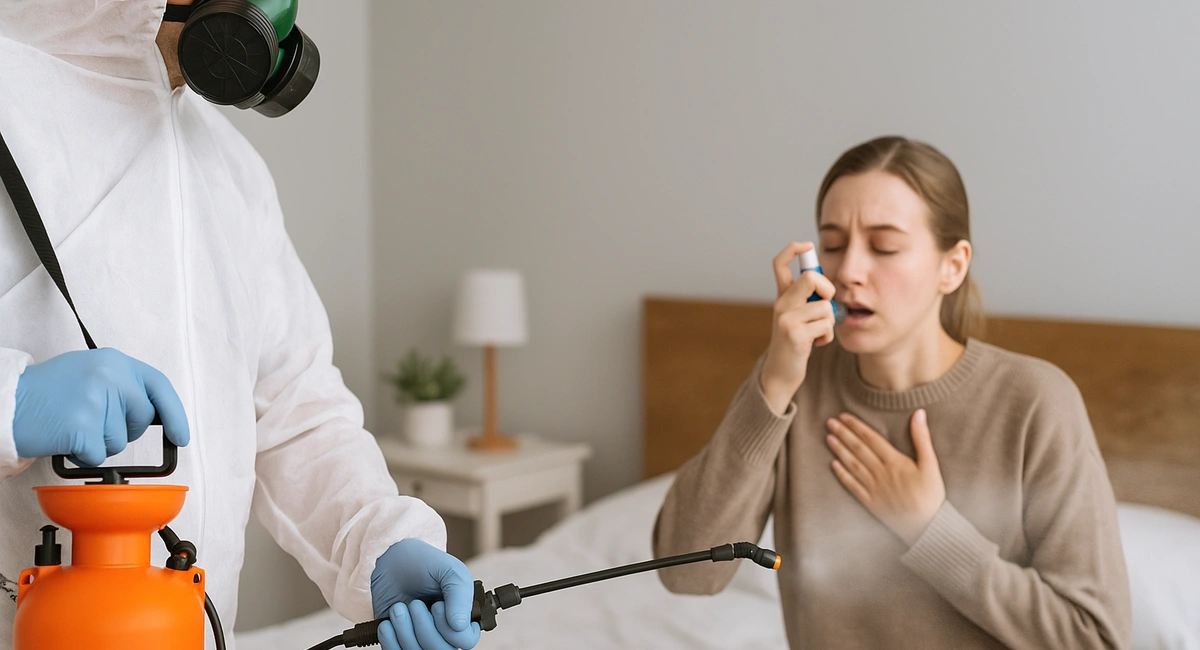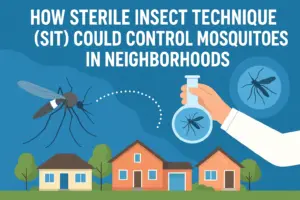For families dealing with asthma or chemical sensitivities, pest control can feel like a tightrope walk. You want to keep pests out, but many traditional solutions use harsh chemicals that can make asthma symptoms worse. Thankfully, there are ways to keep your home pest-free without compromising indoor air quality. With the rise of asthma-friendly pest control options, protecting your home and health is no longer a trade-off.
Whether you’re managing seasonal invaders or trying to prevent rodents from sneaking in, choosing non-toxic pest solutions tailored to sensitive individuals is becoming more common and more effective. For example, understanding the early signs of termite damage helps you avoid large-scale treatment interventions that may involve chemicals.
Why Asthma and Traditional Pest Control Don’t Mix
Many conventional pest control products contain volatile organic compounds (VOCs) and synthetic pesticides. These substances are known triggers for asthma, especially in children and elderly individuals. The symptoms triggered may include:
- Wheezing or shortness of breath
- Chronic coughing
- Chest tightness
- Eye or throat irritation
Even when applied professionally, residue can linger on surfaces or in the air for days. And because pests like cockroaches and rodents are themselves asthma triggers, the wrong kind of treatment can create a cycle that only worsens symptoms.
What Makes a Pest Solution Asthma-Friendly?
Asthma-friendly pest control goes beyond using fewer chemicals. It focuses on prevention, monitoring, and the use of chemical-free pest service methods whenever possible. These are some key components:
- Integrated Pest Management (IPM): A strategy that uses biological, physical, and mechanical tools before reaching for chemical solutions.
- Low-toxicity baits or gels: When chemicals are needed, they are applied precisely to avoid exposure.
- Allergen source control: Removing pest droppings, nests, and other triggers is as important as removing the pests themselves.
A good pest control provider will also consider environmental factors and the sensitivities of everyone in the household.
Steps to Protect Your Home the Asthma-Safe Way
1. Block Entry Points
Pests don’t randomly appear; they find gaps, cracks, and open doors. One of the simplest ways to prevent an infestation is to seal common rodent entry points. Focus on areas around pipes, vents, foundations, and windows. Weather stripping and steel wool can go a long way in keeping rodents out of the attic or pantry.
2. Eliminate Food and Water Sources
Keep your kitchen clean and dry. That means:
- Wipe down counters after every meal
- Store food in airtight containers
- Fix leaky faucets and under-sink pipes
- Take out trash regularly
By eliminating access to food and water, you make your home less attractive to pests, and reduce the need for treatments.
3. Use Natural Deterrents
There are several natural pest deterrents that are safer for people with asthma. Some popular non-toxic options include:
- Diatomaceous earth: Effective against ants, roaches, and bed bugs.
- Essential oils: Peppermint and cedar oils are known to repel spiders and mice.
- Sticky traps and baits: Useful for monitoring without introducing chemicals into the air.
For specific infestations, like ant problems, it helps to learn how to identify ant species so you can match your approach to the type of pest.
4. Schedule Regular Inspections
Many infestations start small and become a problem over time. A regular inspection schedule helps catch issues early. Work with a pest control company experienced in asthma-friendly services. They should be transparent about their products and offer non-toxic pest solutions when appropriate.
Some companies even offer seasonal guides. If you’re in Georgia or Florida, a pest control calendar can help you stay ahead of seasonal threats.
Asthma-Friendly Options for Businesses and Workplaces
Homes aren’t the only spaces affected by pest-related allergens. Offices, restaurants, and even warehouses can become asthma risk zones if pests are present and treated with harsh chemicals. Businesses are now turning to office pest control services that balance effective solutions with health-conscious products.
This is especially important in shared workspaces or hospitality environments, where exposure can affect many people at once. Employee health matters and non-toxic options are proving both effective and practical for commercial properties.
Indoor Air Quality After Pest Control
Even with asthma-friendly pest control, it’s smart to ventilate your space. Open windows when possible and consider using HEPA air purifiers to remove any lingering particles or allergens.
After any pest treatment, always:
- Wipe down surfaces with natural cleaners
- Vacuum using a HEPA filter
- Wash soft furnishings if needed
If you’re unsure about what to do after a visit, check out these tips on what to do before and after pest control treatment to protect your space.
Trending Questions: Pest Control and Asthma
Is pest control safe for people with asthma?
Yes, if you choose services that use asthma-friendly and non-toxic pest control methods. Avoid foggers, sprays, and strong chemicals indoors.
What’s the safest way to get rid of roaches in an asthma-sensitive home?
Use baits in sealed stations, apply gel bait in cracks, and avoid sprays. Roach allergens are strong asthma triggers, so remove nests and clean thoroughly.
Can natural pest control methods really work?
Yes. Many natural methods are effective when paired with prevention strategies like sealing entry points and reducing moisture.
Do rodents trigger asthma attacks?
Yes. Their droppings and dander can worsen respiratory symptoms. That’s why sealing entry points and using rodent removal services that avoid chemical sprays is a smart move.
Final Thoughts
For anyone managing asthma, a pest problem is more than just a nuisance—it can be a health hazard. But you don’t have to choose between breathing easy and keeping bugs out. With growing awareness around chemical sensitivities, pest control companies are offering better options than ever before.
Choosing asthma-friendly pest control means using smarter strategies, reducing exposure to harmful chemicals, and building long-term habits that support a healthy environment. Whether you’re a homeowner or a business manager, there’s a way forward that’s both effective and safe.









